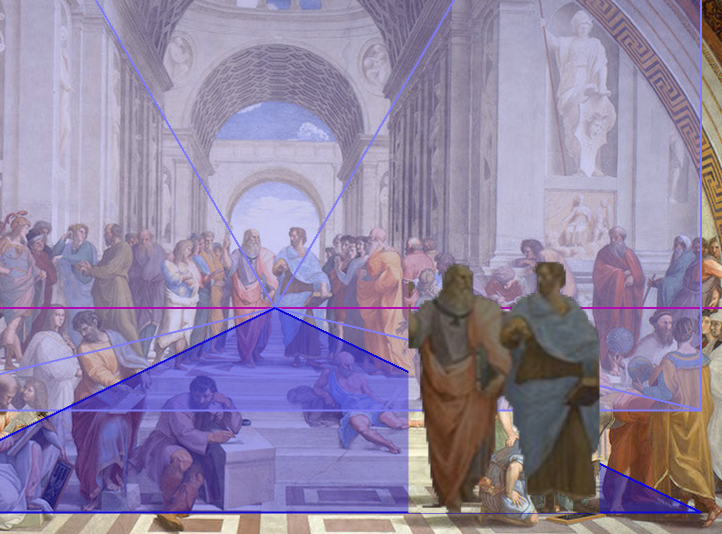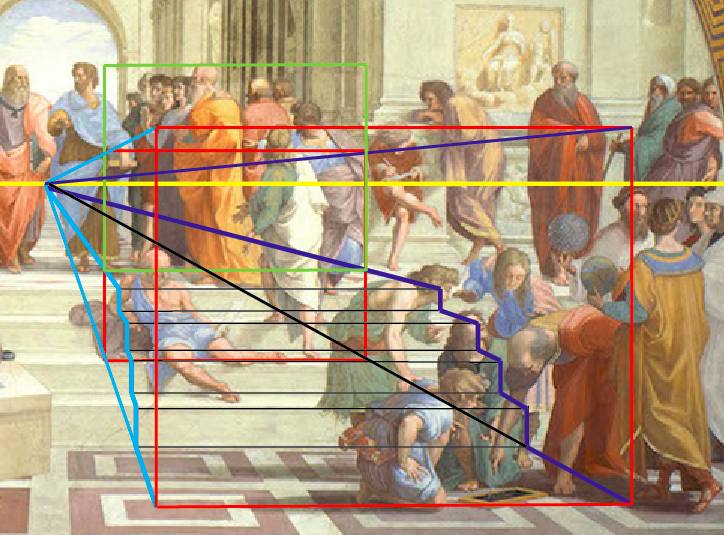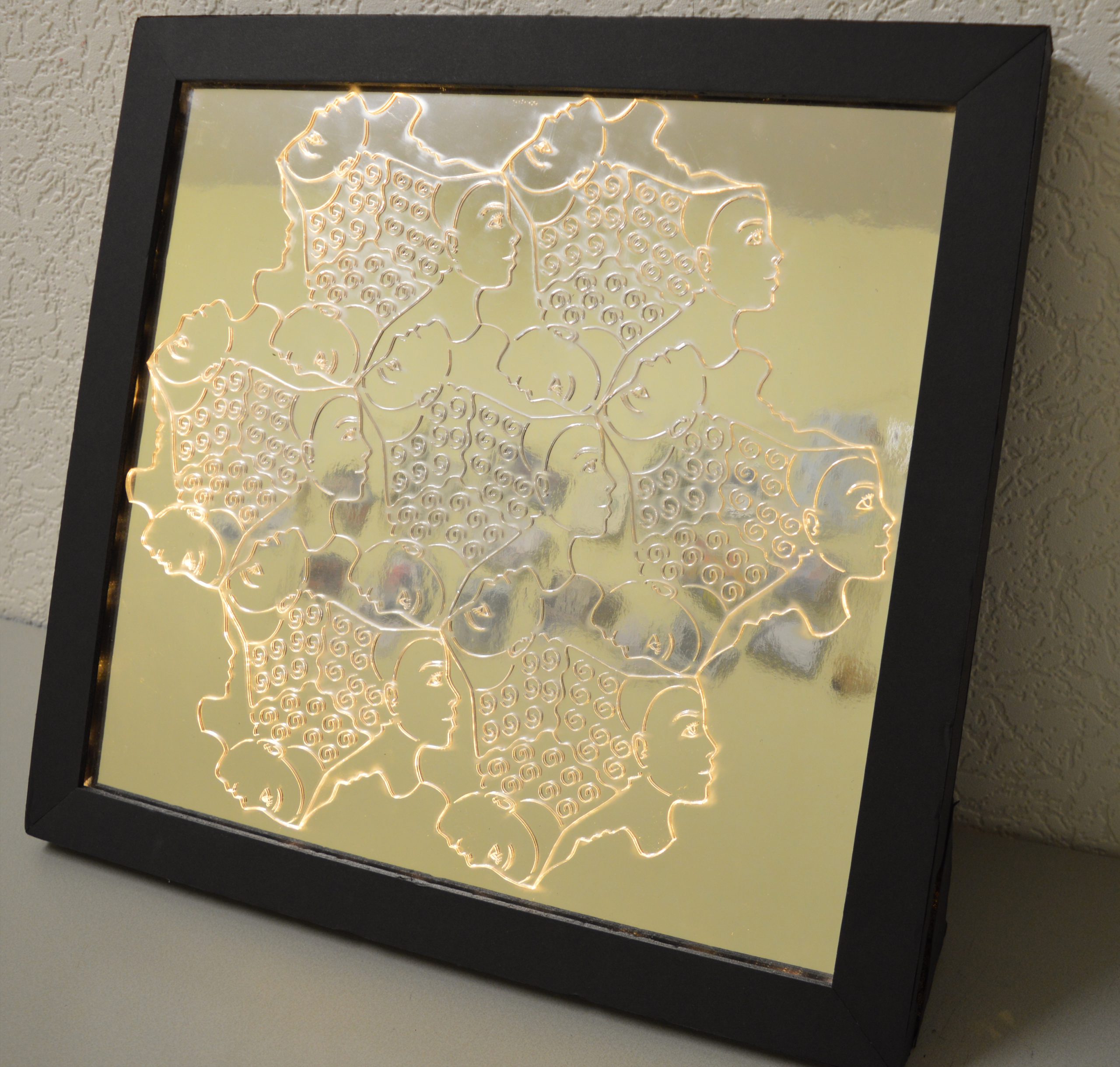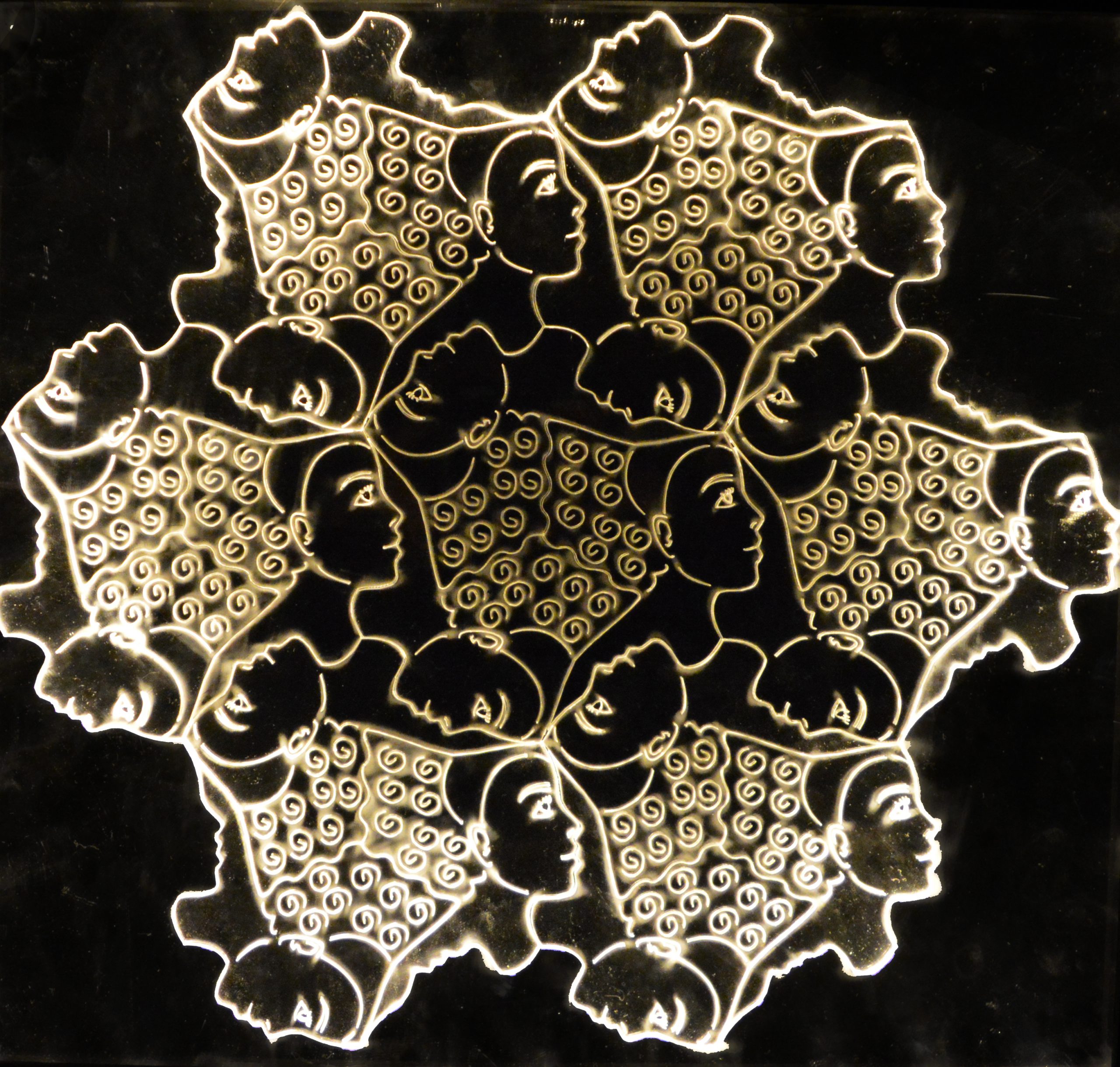
GENERATIVE ARTS
Exploratory design with mathematics in Processing
Golden Ratio and Generative Arts | Math and Processing
Tesselations with Turtle Graphics
Explorations
For this lecture, two small projects are created by using the program Processing. The first project is an exploration of using Processing to analyze perspectives and symmetries in a Renaissance painting. "The School of Athens" is taken as an example. Through using scale transformation the right proportion could be measured in this painting and through using the Catmull-Rom spines [1] in processing, a composition could be found in the painting.






